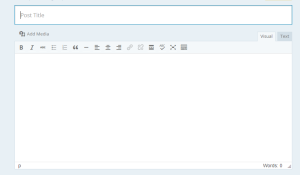Hello everybody, I want to talk to you about Digital History. At the beginning of this semester, I was looking for an interesting history course. I saw a class labeled “Intro to Digital History”. This sounded very cool to me and I decided to sign up for it. Little did I know how different this course was from what I thought it would be.
When I saw the course title, I believed that this course would be about the history of the digital era. I thought that I would learn about the first computers, when the internet was born and so on. I mean come on, “Intro to Digital History”; does that not sound like an introductory course to the history of digitization? I was wrong, but happily so!
I learnt that this class would be teaching me about new media and technology tools and how they helped, help, and will help history. My professor, Professor Sibaja, defined the course as “analyzing the changes that new media and technology tools are bringing to the field of history”.
One of the first items of business was familiarizing myself with Cohen and Rosenzweig’s Introduction to Digital Media http://chnm.gmu.edu/digitalhistory/introduction/. Here I learnt that Digital History is always evolving. I noticed similarities and differences from now and when the article was written (approximately late 2005-early 2006). For example, the article tells of memory space and how cheap it is: “A 120-gigabyte hard drive that sells for $95 and weighs about a pound”. Nowadays we have terabytes worth of information, weighing and costing less.
The most important lesson that stuck with me was regarding powerpoint. In the book “Beautiful Evidence” by Edward Tufte, I learnt how distracting Powerpoint could be. With all of its flourishes and its lack of space, one would be hard pressed to convey their message efficiently. By reading his book, I realized that we are a quick and impatient society. We need information immediately and it has to be to the point. No flourishes and no fluff.
This idea resonated throughout the semester for me. I realized that being an information based society, we need everything right now. Digital Media tools are helping us get there quicker than ever before but I can’t help feeling that we are losing the enjoyment of the journey of getting to our destination.



